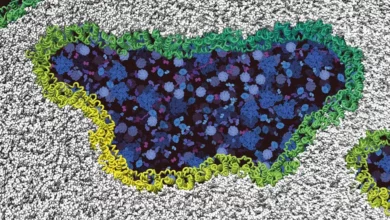
- Building a small clinic is an essential asset for many communities, providing access to healthcare services that may not otherwise be available.
- Licensing and permits are necessary to protect patients, staff, and community members from preventable harm.
- Essential tools and equipment include X-ray machines, ultrasound machines, cardio-vascular monitoring equipment, and reliable clinical chemistry analyzers.
- Experienced staff with up-to-date certifications and licensing requirements are also essential for reliable care in the clinic.
Building a small clinic can be an essential asset for any community. Access to healthcare is necessary for many, but finding the proper care in smaller towns and rural areas can often be challenging. A small clinic provides a much-needed resource close to home and can offer a range of services that may not otherwise be available.
Statistics show that 14% of Americans live in rural areas, and this number is projected to experience further growth. This means more people will need access to healthcare services. Unfortunately, studies have found significant health disparities between urban and rural Americans. Rural communities often lack resources such as specialty care or even essential primary care providers, which can lead to higher mortality rates from preventable diseases.
Small clinics help bridge this gap by providing easier access to essential healthcare services than what might otherwise be available in these areas. They also offer convenience since they operate with shorter wait times than larger hospitals or medical centers. Moreover, small clinics may specialize in specific treatments, such as family medicine or geriatrics, allowing them to serve their local communities better and provide specialized care that patients otherwise would not access.
However, starting a small clinic will require several steps before becoming reliable, and these services can help build a clinic much easier. Here are some of the things you might need to start a small clinic:
Licensing and Permits
Building a small clinic requires the acquisition of various licenses and permits. These are essential for legitimizing the business and ensuring compliance with local, state, and federal regulations. This is part of protecting patients, staff, and other members of the community from preventable harm due to negligence or malpractice.
When obtaining licenses and permits, it is essential to ensure they are acquired from reliable sources. Each state has its requirements on which ones are needed for a medical facility to operate legally. Researching these requirements before beginning the process will help streamline things in the long run. Doing so also helps to avoid any potential issues that could arise during the permitting phase down the road. Furthermore, any additional certifications may be needed depending on what types of services will be offered at the clinic and who will be providing them.
In addition to licenses and permits, clinics must obtain insurance coverage before opening their doors. This protects patients and providers from any medical errors or accidents that may occur while receiving care in the facility. Insurance is often a requirement for many healthcare providers and is usually necessary for getting reimbursed by insurance companies for services rendered.
Tools and Equipment Supply

Having the proper tools and equipment is essential for any clinic. These range from diagnostic tests to medical supplies, such as bandages and syringes. Moreover, it is necessary to have some basic medical furniture, like exam tables and patient chairs, available.
For the medical equipment, there are a few pieces critical for a small establishment. They will cost a lot, but they are vital to the diagnostic processes to help patients begin their treatment and recovery journey. Here are a few of them:
X-ray machine
The x-ray machine is essential for diagnosing fractures, broken bones, and other medical problems. It offers a detailed image of what’s going on inside the body without needing invasive surgeries or treatments.
Ultrasound machine
The ultrasound machine diagnoses conditions such as abdominal pain and gallstones. It is also helpful in obstetrics to check for fetal development or any other complications during pregnancy.
Cardio-vascular monitoring equipment
This includes an EKG machine, defibrillator, and pulse oximeters. These instruments are necessary for detecting any potential heart problems that may be present in patients.
Electronic health records
Finally, having electronic health records is paramount for a modern clinic. These systems provide an efficient way to store patient information and increase accuracy when it comes time to prescribe medications or treatments. Plus, they help protect confidential data from potential breaches by keeping the information secure.
Healthcare Staff

Of course, the essential part of any clinic is the staff. Depending on the services offered, you may need to hire various healthcare professionals, such as doctors, nurses, medical assistants, and office staff.
Finding the right team to run your small clinic can be challenging since they will be responsible for patient care and communication with other healthcare providers. It’s essential to make sure everyone is up-to-date on their certifications and licensing requirements so they can provide the best care possible. Moreover, all personnel must receive adequate risk management training to handle potential emergencies during patient visits.
However, a few complicated processes might require special equipment, like a reliable clinical chemistry analyzer. The specialist can help detect various health conditions, such as diabetes and metabolic disorders. The information from these tests provides essential insight into how to treat any medical issues that may be present in some patients.
Final Thoughts
Starting a small clinic is no small task. It requires a lot of planning and preparation to ensure you have everything necessary for reliable care. From obtaining the proper licenses and permits to having reliable clinical chemistry analyzers, it’s essential to have all the required components before opening your doors. Building a small clinic can be a necessary asset for any community- make sure you’re ready before taking on this important endeavor!


